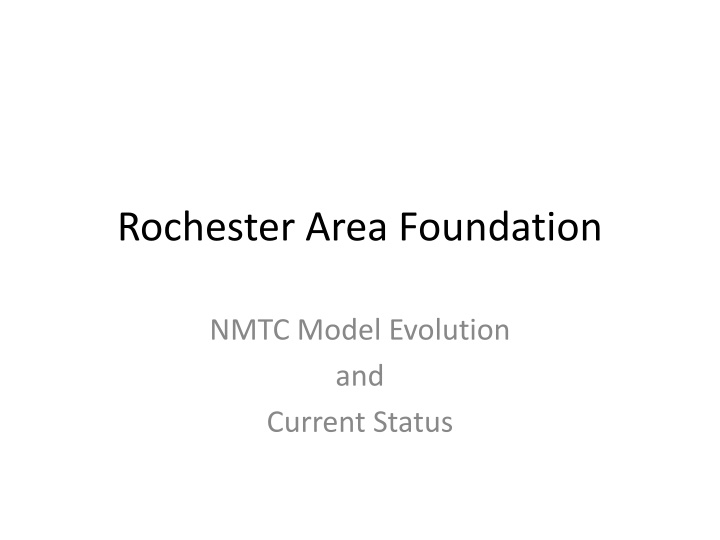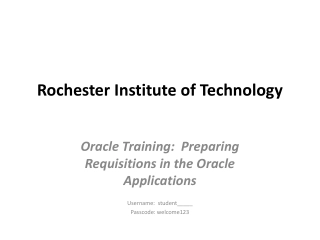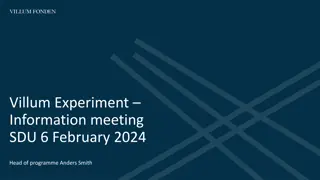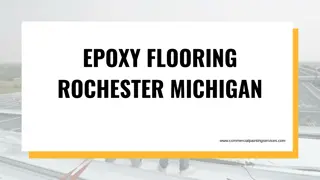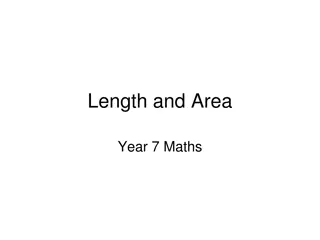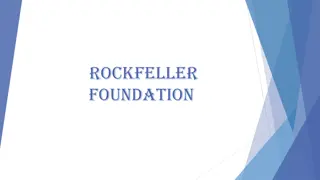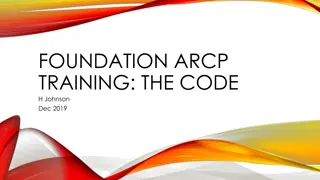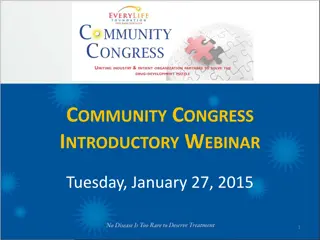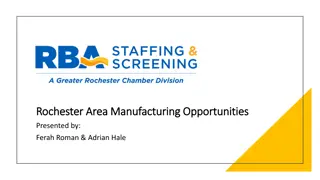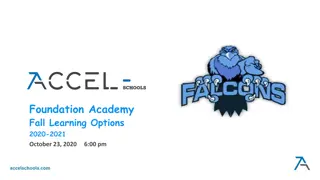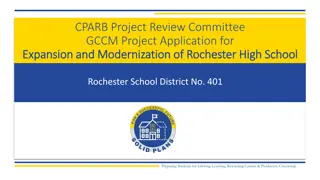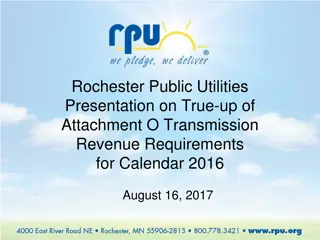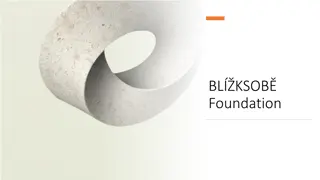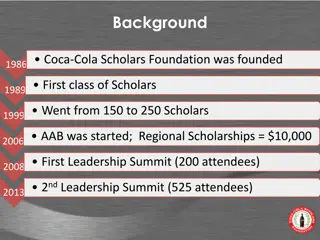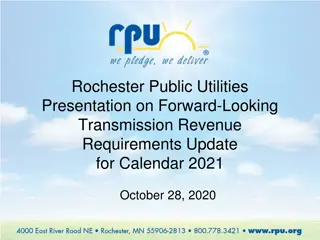Evolution of Rochester Area Foundation NMTC Model
The Rochester Area Foundation has evolved its NMTC model to better serve the DMC EDA by matching developers with eligible projects, collecting consulting fees, and addressing challenges like startup curves and accumulating deficits. Modifications include fee structures, subcontracted consulting services, and a turnkey program offered by a consulting firm with NMTC expertise.
Uploaded on Oct 05, 2024 | 0 Views
Download Presentation

Please find below an Image/Link to download the presentation.
The content on the website is provided AS IS for your information and personal use only. It may not be sold, licensed, or shared on other websites without obtaining consent from the author.If you encounter any issues during the download, it is possible that the publisher has removed the file from their server.
You are allowed to download the files provided on this website for personal or commercial use, subject to the condition that they are used lawfully. All files are the property of their respective owners.
The content on the website is provided AS IS for your information and personal use only. It may not be sold, licensed, or shared on other websites without obtaining consent from the author.
E N D
Presentation Transcript
Rochester Area Foundation NMTC Model Evolution and Current Status
Original Model Structure RAF serving as CDFI for DMC EDA Recruit CDE s willing to allocate tax credits Match DMC developers with eligible projects in the DMC district with interested CDE s Collect consulting fees from developers and CDEs as credits are utilized in projects Staff project with additional FTE with expertise in new market tax credit financing Challenges; full time staffing with intermittent activity and/or revenue from projects. Long startup curve.
Model Modification (A) RAF serving as CDFI for DMC EDA Recruit CDE s and match projects/developers Collect modest concurrent consulting fees from developers Collect portion of debt to equity conversion (yr. 8) Staff project with additional FTE with expertise in new market tax credit financing Challenges; full time staffing with intermittent activity and/or revenue from projects. Long startup curve. Accumulating deficit expected years 1-7.
Model Modification (B) RAF serving as CDFI for DMC EDA Sub contract consulting services to recruit CDEs and match with developers/projects Collect consulting fees from developers Success fee at closing, reimburses consultant fees Housing Fee at closing, or Debt to equity sharing at year 8 Staff project with limited RAF staff to assist as needed (mainly relationship management) Challenges; intermittent revenue resulting in accumulating deficit ,though less than (A)
Business Model Basics Turn key program via consulting firm with fully owned CDE and expertise with NMTC funding They would recruit, using DMC materials Develop an optimizing strategy for NMTC use in DMC Assistance in all components and stages of NMTC acquisition, negotiation, transaction structure, securing financing and investors Monthly retainer ($15k) in the form of a non- refundable advance against 3% loan origination success fee paid by developer Housing fee (2%) or Debt to equity conversion payments to RAF
Proposal Funding Basics Monthly Retainer payments; out of pocket could reach $200,000 to $250,000 at some points in time (but would be reimbursed) Net revenue potential $350k to $575k per year if collected at closing $750k to $1M per year if collected year 8 Revenue structure will vary by deal, likely a combination of the two Some ongoing incremental staff/OH costs
Modified Model (B) Advantages & Challenges Advantages Maintains upside of debt to equity sharing Turn key, allows quick implementation including potential look back on current projects Limits cumulative funding needs via intermittent rebates from consultant s success fee. Fees are in line, normal for NMTC s Developer takes no risk, paying only with success and effort/benefit linked to DMC grant money Limits RAF support to relationship/data management
Modified Model (B) Advantages & Challenges Challenges The interim revenue stream does not cover the full cost of implementing and maintaining the program. Success fee revenue rebates cover only consulting fees, not any of the administrative/management costs to RAF Some money most likely left on the table as compared to RAF performing services and collecting all revenue However, likelihood of success is less risky and maximum amount of unreimbursed expenses is probably reduced. Project will require startup cost support from Mayo
Key Issues TBD Duration of agreement would prefer a preliminary test period with extension based on outcomes Fee structure finalize consultant and RAF fees Will suggest some bonus to RAF based on success rates Define scope of rebates including carryover? Out of pocket expenses Definition of RAF administrative support Anticipate managing relationships, introductions, data collection and reporting
Discussion Questions and concerns? Process for closure?
